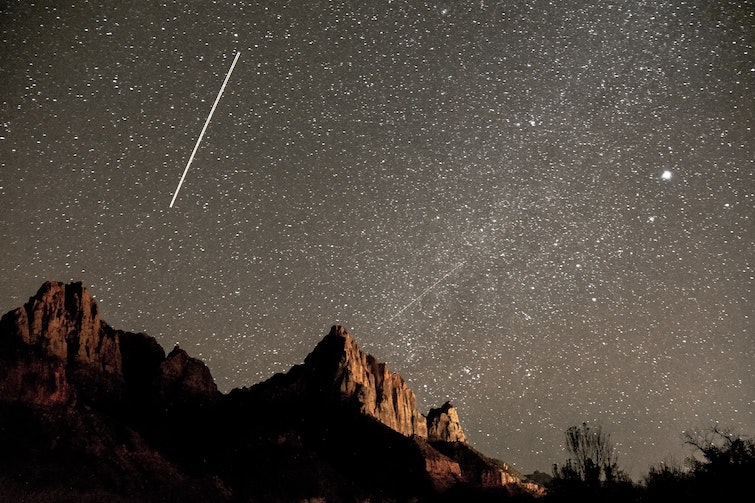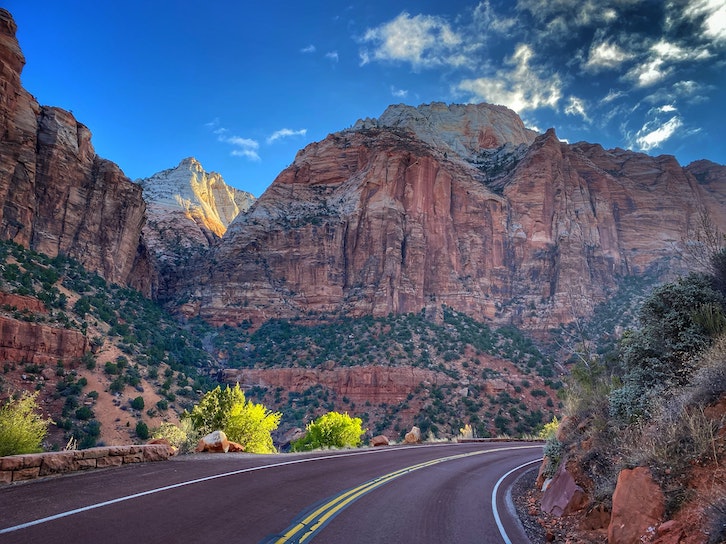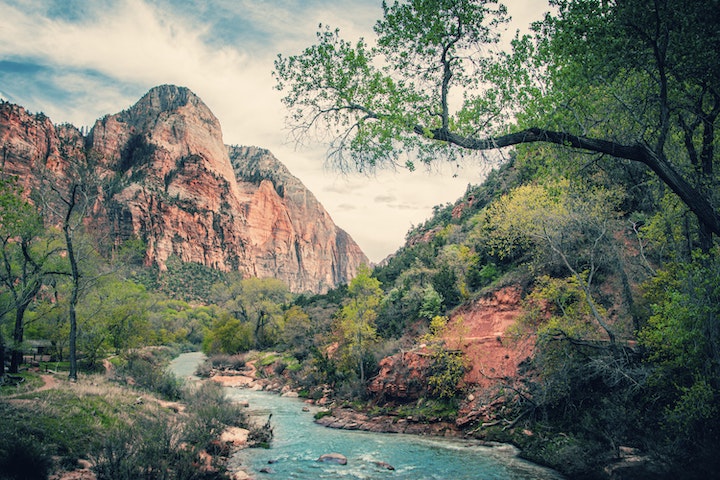A perfect time to visit Zion National Park is during the fall months. you can avoid peak season and crowds that come with the summer months. This time of year you can replace those summer crowds with fall colors. Late September marks the start of fall foliage season and runs until early November.
While Zion National Park is open year-round, October is truly the best time to visit. You can avoid the typical closures (for example, Kolob Terrace Road can be closed due to snow and ice) which are likely to happen in the colder weather of the winter months as well as the snowfall that can hit suddenly in late fall or early March. So once the last of summer road trippers have driven off at the end of Memorial Day weekend, enjoy the great season of fall at Zion National Park with an October trip.
Note: Speaking of avoiding cold weather, the coldest month in Zion National Park is January when the average daily high does not get above 37F. In my book that makes it one of the best months to avoid!

Weather
The average temperature in the early fall months of September and October is comfortably warm. The average high is 78F and low temperatures don’t tend to go below 48F. The monsoon season typically runs from July to September and can create quick-rising water levels and flash floods. So it’s smart to skip that and instead relish the comparably dry month of October with warmer temperatures and sunny days. With fewer days of rain, moderate daytime temperatures lead to pleasant weather for hiking. Far from the high temperatures and long days of summer, fall’s cooler temperatures at night are still comfortable enough for stargazing. Taking advantage of a park after dark increases your chance of a good time!

Things to Do
Zion is one of America’s favorite national parks for a reason. While the best hikes will be totally unique to you, there is truly something for everyone here at this southern Utah gem. Hiking trails that highlight strenuous hikes such as Angels Landing and Observation Point allow you to take in spectacular views from higher elevations all the way down to the canyon floor. Kolob Canyons Road will lead you on a hike along a 14-mile trail toward Kolob Arch. Plan for a full day for this one!
Famous hikes at lower elevations and with greater accessibility include the Riverside Walk Trail which has wonderful views of the Virgin River. Another popular hike with greater accessibility is the Pa’rus trail which also follows the river from the south campground.
Get Your Travel Goals Newsletter & BONUS Workbook
Note: Coming from Cedar City, St. George, or Las Vegas and looking to camp? Watchman Campground is right next to the south entrance.

The east entrance hosts uncrowded hiking trails such as the full-day hike on East Rim Trail. Or try the shorter Canyon Overlook Trail. The trail parking lot is just east of the Zion-Mount Carmel tunnel. Elevation gain is minimal after climbing the stair steps carved into the stone.
Leaving from this side of the park can also connect you to Hwy 89. This route can lead to Bryce Canyon National Park and then on to Capitol Reef National Park via Hwy 12 if you are planning on a Utah road trip. One of the best things about a Utah road trip is the scenic Hwy 12 drive! While it’s not the shortest route between two points, it is definitely one of the most beautiful.
Within Zion, you can indulge in a nice drive as well. Zion Canyon Visitor Center is beautiful with yellow cottonwoods in the fall. While there is plenty of space during this less crowded time in the park and small parking lots exist at many of the trailheads, shuttle buses are still running consistently and will take you along the entire Zion Canyon Scenic Drive. So leave your car at the Visitor Center lot. Ride all the way to the last stop, the Temple of Sinawava. From here enjoy a popular hike like the Zion Narrows. Ride back toward Zion Lodge, a great place for lunch or a picnic on the expansive lawns. Private vehicles are allowed when it is not peak season but the shuttle is convenient, frequent, and more environmentally friendly.
Get Your Travel Goals Newsletter & BONUS Workbook

The entrance fees are typically per person or by vehicle. The entrance fee to Zion is $35 per vehicle but if you’re planning on visiting more than two national parks in a year, it is a good idea to purchase America the Beautiful Pass. The United States has a wealth of beauty in not only this popular national park, but including over 60 others, so this $80 pass is definitely worth it. I can promise you a wonderful time at Zion Park whether this is a one-time visit or if you plan to come back again and again.
What to Bring
To have the best experience at the park, pack correctly. Wear sturdy and comfortable hiking shoes, neoprene socks, a reusable water bottle, and plenty of water. Save yourself the extra cost of buying snacks by bringing plenty of your own. Ensure that everyone has a great time by visiting by the end of October and getting the latest updates on weather, trail closures, and shuttle service from the national park service website.

We hope this Zion National Park travel guide has helped you get the most out of your trip! Feel free to leave us a comment or connect to more information with our detailed Zion National Park itinerary.
